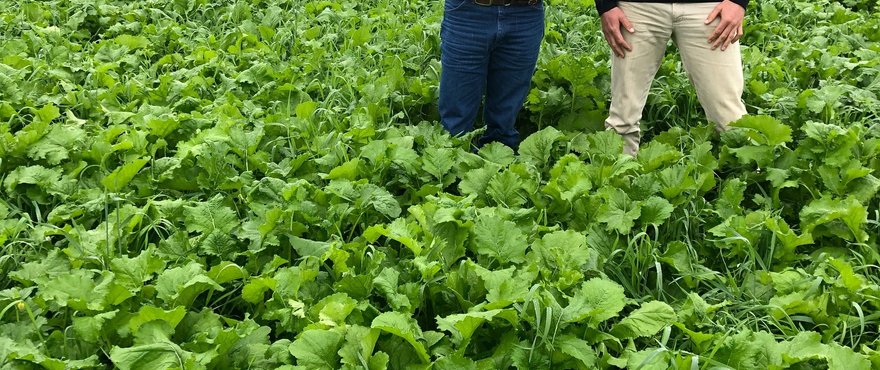Download a copy of the Falcon Hybrid Leafy Turnip factsheet.
Forage brassicas are useful for extending the growing season when other forages may be less productive or lower feed quality. Falcon is a quick maturity rape/turnip hybrid cross. These are also known as leafy turnips. It will grow a small bulb with high leaf yields. Falcon will provide quick feed, often in 6–8 weeks, and with good grazing management can offer multiple grazings. Leafy turnips can be sown from September to April.
Key features
- Graze in 6 – 8 weeks
- 10 –15% yield advantage over older varieties
- Improved early vigour
- High stock acceptance and improved palatability
- Excellent recovery from grazing
Key benefits
- Quick feed: Suits sowing from early spring to mid-autumn
- Excellent companion plant for spring or autumn sown annual forages
- A break crop as part of a pasture renovation program
- May be used in a mix with other species for specific outcomes, although has excellent feed quality attributes when sown as a sole variety
- Very suitable for dairy, finishing and extensive sheep and cattle enterprises
Using Falcon Hybrid Leafy Turnip
Suited to no-till and cultivated sowing. Can utilise similar herbicide techniques as per conventional rape; pre-emergence options may be useful in some circumstances. Fertiliser requirements are similar to that for other brassica forages. A sowing depth of 5 to 10mm is recommended. Sowing deeper than 20mm may result in slower or reduced emergence.
Grazing Management
Falcon should be grazed once it achieves around 30–40cm in height, or about 8–10 leaves. Repeat grazings are possible each time the crop returns to the desired height. To achieve rapid regrowth, grazing down to a range of 5–10cm is recommended. If grazed lower, regrowth may be slower. If left longer, regrowth may occur from the stem rather than bulb and be restricted. Sound grazing management of forage crops is essential to maximise yield, feed quality and utilisation. Strip grazing or small block grazing with an electric fence will allow the crop to be utilised more effectively. Losses caused by trampling can be kept to a minimum, gorging can to some degree be managed and by controlling stock movements, the paddock can be utilised effectively. Back-fencing of multiple-graze crops, together with fertiliser top-dressing and timely irrigation will maximise the potential of the paddock. Avoid introducing empty, hungry animals onto a lush crop as various illnesses may otherwise result. Stock should have access to good clean water. This is especially important over summer when evaporation rates are higher and will help prevent suppression of appetite and consequent production setbacks. It’s advisable to introduce animals onto a forage crop slowly at first, so that the rumen can adjust to the change to a high quality diet. Brassicas are highly digestible and have a low fibre content, so access to roughage such as hay or a run-off to dry pasture may provide a more balanced diet and improved performance.
Plant Breeders Rights (PBR): This variety is registered under Plant Breeders Rights (PBR) in Australia. Unauthorised commercial propagation or any sale, conditioning, export, import or stocking of propagating material is an infringement under the Plant Breeders Rights Act (1994). Any breach of this legislation will leave the grower liable for prosecution.
Disclaimer: The information presented in this brochure is from official and other sources and is considered to be reliable. It is provided in good faith and every care has been taken to ensure its accuracy. Barenbrug does not accept any responsibility for the consequences that may arise from the acceptance of recommendations or the suggestions made.



